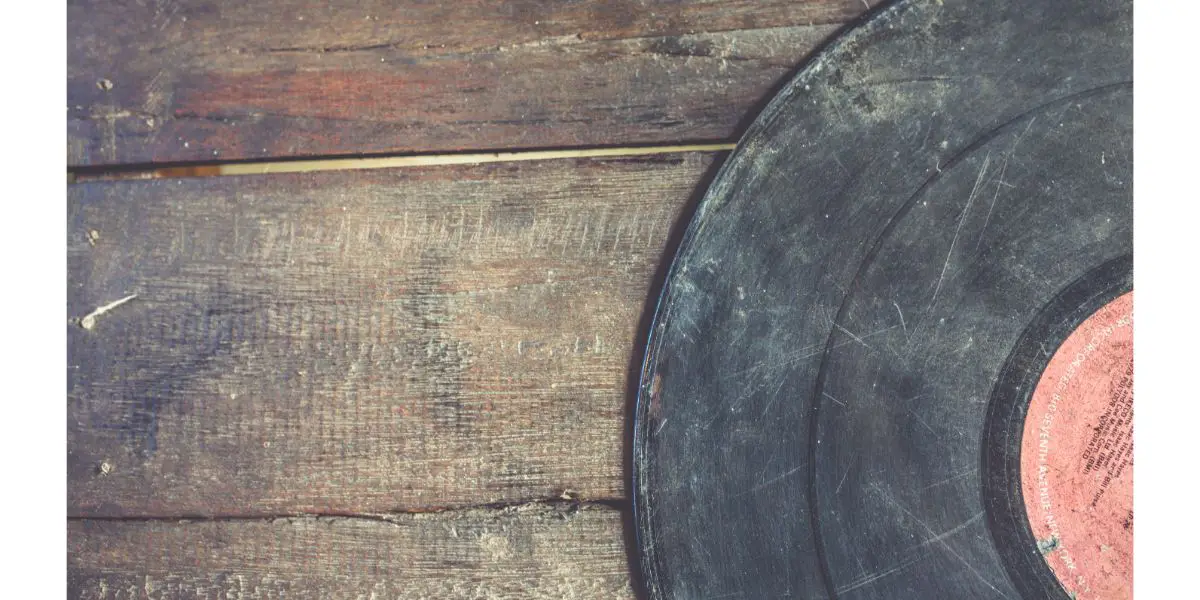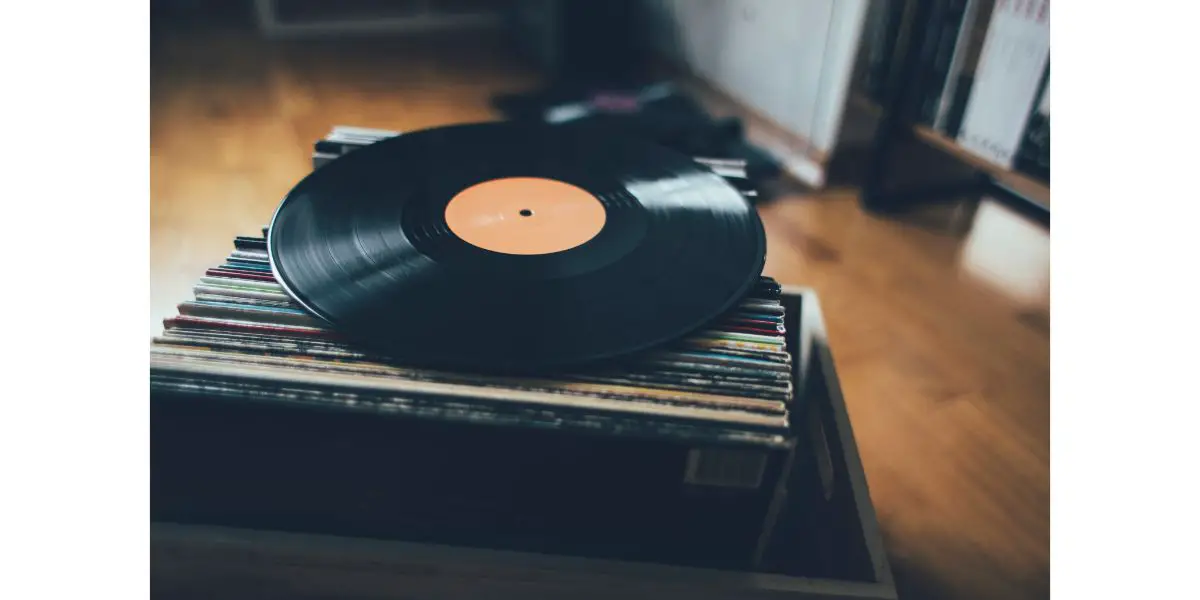Disclaimer: This post may contain affiliate links, meaning we get a small commission if you make a purchase through our links, at no cost to you. For more information, please visit our Disclaimer Page.
Vinyl records are relatively hard, rigid discs that play a variety of audio recordings. Although they were more common many years ago, they have maintained a core following of enthusiasts and collectors. Further, they’ve made a resurgence in recent years, attracting the young generation.
It would not be unfair to say that vinyl records are relatively durable, particularly when you take good care of them. However, many collectors still wonder what can happen if they accidentally drop a vinyl record.
Like any media we used to store audio for playback, too much damage can make a record to be unplayable. To put some of these theories to rest, we will explore what happens if you dropped a vinyl record on different surfaces.
Table of Contents
What Happens if You Drop a Vinyl Record?
What can happen to vinyl when you drop it can depend on a few factors. We’ll try to address some of the most common outcomes from dropping vinyl in this section.
Scratching or Grooves
Records already have grooves where the needle moves to play the audio tracks on the vinyl. However, dropping your vinyl can cause new scratches or grooves. How serious the cracks or scratches depend on how far the record falls and what hits on the way down. If you are quite fortunate, your vinyl will have minimal damage.
However, a record that hits a sharp edge at the right angle could suffer a scratch. Even if it does not hit anything sharp, the hardness of the surface on which it lands might scratch the vinyl material. What happens from this point depends on the overall depth of the scratch or its location.
Sometimes, you may drop a record several times. Even if you added one minor scratch to the vinyl layer each time you did this, it is entirely possible that the record would still sound fine when you played it.
Even in the community, it is not uncommon to drop a stack of records from time to time. Although there is some risk of the units breaking, this does not seem to be the most likely outcome. In short, the vinyl record could suffer some unsightly scratches. At worst, the damage will affect the sound quality.
However, this kind of scenario seems to be relatively rare. Although many dedicated collectors do not want to add any blemishes to their records, some results appear to be primarily cosmetic.
Do Vinyl Records Break Easily?
Typically, it is not easy to break a vinyl record. The answer assumes you are using them following the correct guidelines for use. You should also care when removing, changing, or moving your record collection. With proper handling, it’s difficult to break a record.
Before we move on, note that vinyl records have predecessors that are equally popular among collectors. These are shellac records, which are much more brittle than vinyl. They can break or shatter easily if you drop them. This is companies switched over to vinyl products — vinyl is more durable.
A big part of vinyl’s durability is in its polyvinyl chloride components. These compounds are shatter-resistant. Of course, shattering or breaking a vinyl record is still possible, but this requires using force. Negligence is another factor that might cause damage to the vinyl record.
While it is difficult to determine the exact amount of force required to break a record, it is clear that it is more than just dropping it. Unless the record lands on a hard surface from a high location, it shouldn’t suffer any cracks or serious damage.
How Do I Know if My Vinyl Record Is Damaged?
There are a few ways you might notice damage to your vinyl records. However, there are also some types of damage that you may not see or feel. You will notice it only when you play it.
Generally, any scratches you cannot see or feel on the record are less likely to create audio distortions. Conversely, if you see a deep groove in the record, it’s the cause for the popping or other audio issues during playback.
Not all the audio distortions result from damage. For example, you might hear a popping noise while playing a particular song. If you play the same track again, you may hear the popping noise a second time. However, the sound has moved to a different part of the song.
These differences are good indicators that there is no physical damage. Instead, something is causing static buildup on the surface of the record. This buildup is creating the popping noise, but it is something that you should be able to remove.
This sound may go away once you clean the record properly. However, static or dust might return later. To lessen the possibility, get a turntable platter that resists static. Although it would not be a guarantee against future intermittent pops, it could go a long way toward solving temporary sound issues when you play records.
What Else Will Damage a Vinyl Record? 4 Things
1. Touching
Despite its durability, vinyl records still need gentle care. So when you grip the edge of a record to transfer it from its sleeve to the turntable, do so with a light touch. Additionally, do not touch the flat sides of the record.
Even if your hands are clean, they will contain oil and other substances that could get on the surface of the vinyl. Once this happens, dirt and oil can accumulate.
The buildup can affect the overall quality of the sound over time. After a while, it can also damage your record player’s needle.
If you accidentally touched one of these surfaces, remember to wipe the record before returning it to its sleeve for storage. You can also use cleaning solutions for this purpose, mainly if you think the record passed through many hands.
2. Horizontal Storage
Stacking an entire collection of records horizontally can also cause damage over time. This storage method places excess pressure on the ones near the bottom of the stack.
Too much pressure can warp the record out of its alignment. This warping can affect its playback ability. More so, stacking records like this can create sleeve marks.
3. Sleeving
When you’ve finished playing a record, you need to re-sleeve it. Although this is a simple process, it can lead to damage if you are not careful. If you just drop the record in its sleeve, you risk putting too much wear on the storage case itself.
Over time, you may put a hole in the back of the sleeve. Putting away your records carelessly like this could also scuff the surfaces of the vinyl.
4. Playback Issues
Most turntables will have cueing arms that can lower or raise the tone arm that positions the stylus. Some people like interrupting a playing record and using their hands to cue and remove it.
If you bypass the cueing arm, you risk putting deep scratches on the surface of your vinyl. Further, it is best to wait until your record stops spinning before removing it from the platter.
Conclusion
Vinyl is quite a durable medium, so it is no surprise that young audiophiles show an interest in this kind of playback media. Its rigidity and resistance to damage may be high, but you need extra care when you take out, play, or return your record to its sleeve. Dropping a record could scratch it deep enough and affect its sound. Always use caution when handling your collection.


